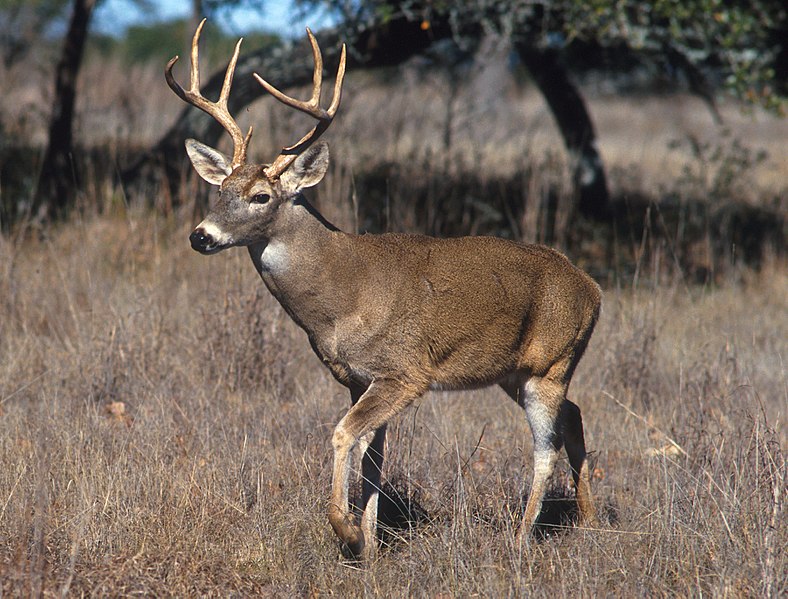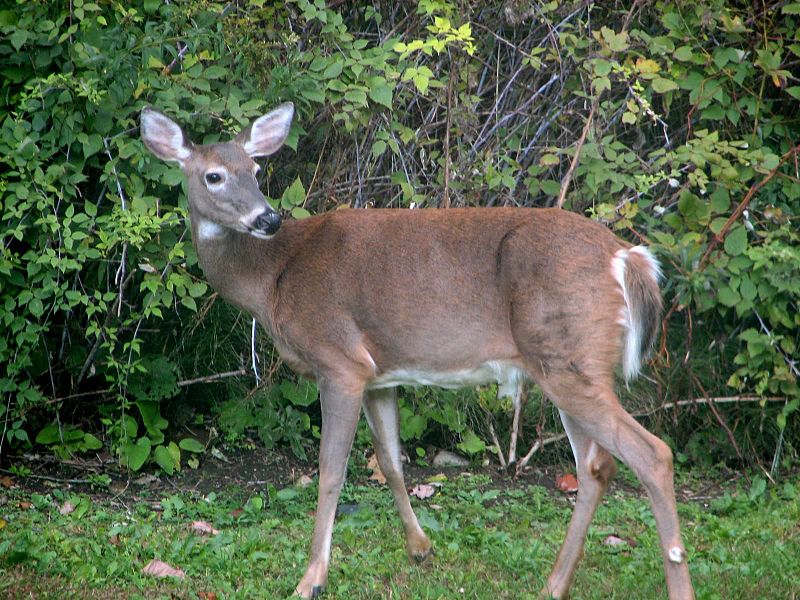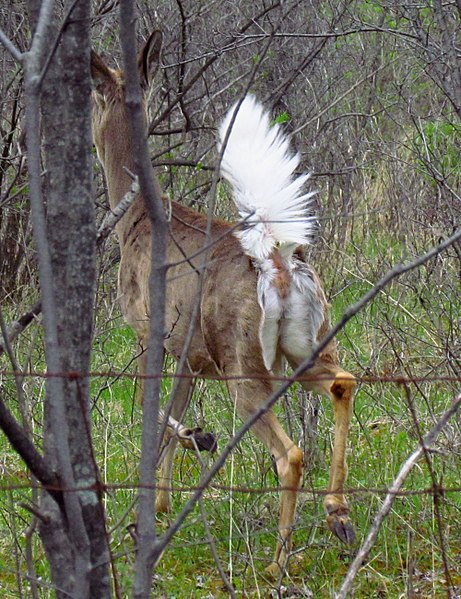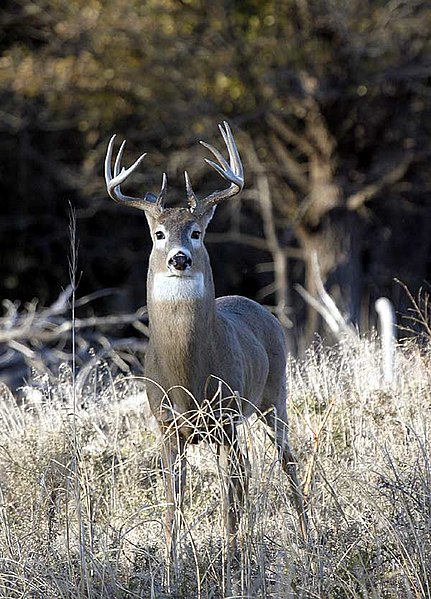Arizona’s other deer, the Coues, is a subspecies of the white-tailed deer. Coues deer are most common in Arizona’s southeastern mountains, but range up on to the Mogollon Rim and into the White Mountains. They are most abundant in areas of predictable summer precipitation. They prefer woodlands of chaparral, oak, and pine with interspersed clearings.

The white-tailed deer, also known as the whitetail or Virginia deer, is a medium-sized deer native to North America, Central America, and South America as far south as Peru and Bolivia. It has also been introduced to New Zealand, all the Greater Antilles in the Caribbean (Cuba, Jamaica, Hispaniola, and Puerto Rico), and some countries in Europe, such as the Czech Republic, Finland, France, Germany, Romania and Serbia. In the Americas, it is the most widely distributed wild ungulate.

In North America, the species is widely distributed east of the Rocky Mountains as well as in southwestern Arizona and most of Mexico, except Lower California. It is mostly displaced by the black-tailed or mule deer from that point west except for mixed deciduous riparian corridors, river valley bottomlands, and lower foothills of the northern Rocky Mountain region from Wyoming west to eastern Washington and eastern Oregon and north to northeastern British Columbia and southern Yukon, including in the Montana valley and foothill grasslands.

Males regrow their antlers every year. Bucks without branching antlers are often termed “spikehorn”, “spiked bucks”, “spike bucks”, or simply “spikes/spikers”. The spikes can be quite long or very short. Length and branching of antlers are determined by nutrition, age, and genetics. Rack growth tends to be very important from late spring until about a month before velvet sheds. Healthy deer in some areas that are well-fed can have eight-point branching antlers as yearlings (1.5 years old). Although antler size typically increases with age, antler characteristics (e.g., number of points, length, or thickness of the antlers) are not good indicators of buck age, in general, because antler development is influenced by the local environment.

The individual deer’s nutritional needs for antler growth is dependent on the diet of the deer, particularly protein intake. Good antler-growth nutritional needs (calcium) and good genetics combine to produce wall trophies in some of their range.[21] Spiked bucks are different from “button bucks” or “nubbin’ bucks”, that are male fawns and are generally about six to nine months of age during their first winter. They have skin-covered nobs on their heads. They can have bony protrusions up to a half inch in length, but that is very rare, and they are not the same as spikes.
